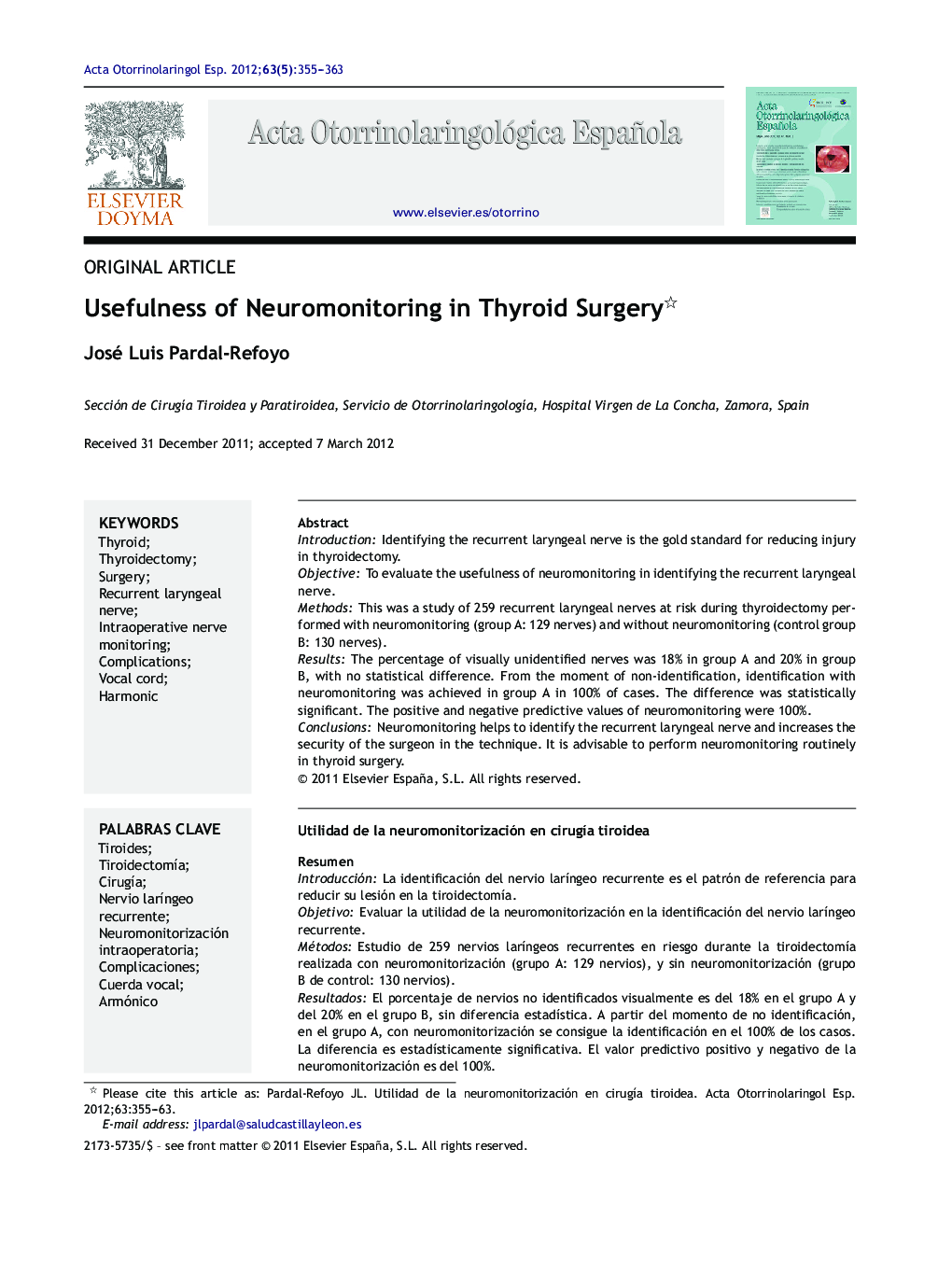| Article ID | Journal | Published Year | Pages | File Type |
|---|---|---|---|---|
| 4101115 | Acta Otorrinolaringologica (English Edition) | 2012 | 9 Pages |
IntroductionIdentifying the recurrent laryngeal nerve is the gold standard for reducing injury in thyroidectomy.ObjectiveTo evaluate the usefulness of neuromonitoring in identifying the recurrent laryngeal nerve.MethodsThis was a study of 259 recurrent laryngeal nerves at risk during thyroidectomy performed with neuromonitoring (group A: 129 nerves) and without neuromonitoring (control group B: 130 nerves).ResultsThe percentage of visually unidentified nerves was 18% in group A and 20% in group B, with no statistical difference. From the moment of non-identification, identification with neuromonitoring was achieved in group A in 100% of cases. The difference was statistically significant. The positive and negative predictive values of neuromonitoring were 100%.ConclusionsNeuromonitoring helps to identify the recurrent laryngeal nerve and increases the security of the surgeon in the technique. It is advisable to perform neuromonitoring routinely in thyroid surgery.
ResumenIntroducciónLa identificación del nervio laríngeo recurrente es el patrón de referencia para reducir su lesión en la tiroidectomía.ObjetivoEvaluar la utilidad de la neuromonitorización en la identificación del nervio laríngeo recurrente.MétodosEstudio de 259 nervios laríngeos recurrentes en riesgo durante la tiroidectomía realizada con neuromonitorización (grupo A: 129 nervios), y sin neuromonitorización (grupo B de control: 130 nervios).ResultadosEl porcentaje de nervios no identificados visualmente es del 18% en el grupo A y del 20% en el grupo B, sin diferencia estadística. A partir del momento de no identificación, en el grupo A, con neuromonitorización se consigue la identificación en el 100% de los casos. La diferencia es estadísticamente significativa. El valor predictivo positivo y negativo de la neuromonitorización es del 100%.ConclusionesLa neuromonitorización ayuda en la identificación del nervio laríngeo recurrente, incrementa la seguridad del cirujano en la técnica y es recomendable realizarla sistemáticamente en la cirugía tiroidea.
